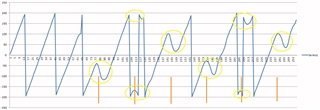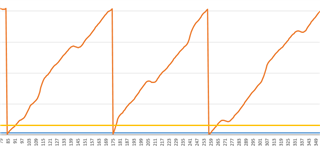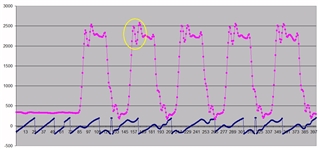Hi,
I have test setup consisting of 2 boards, one that sends a packet every 2 seconds with CTE, and another with a 2-antenna array that generates MagPhase samples and sends them to a serial port so that I can save and plot them. I'm running in AoA mode, switching between the 2 antennas every 4us. I am sampling every 125ns, so I get 32 samples on each antenna. I'm keeping the sample rate high for now so that I can see the phase slope shifting as I move the transmitter.
My question concerns the phase changes around the antenna switch events. I expected to see a fairly obvious jump in the phase, especially as the 125ns sample period is much longer than the 10-20ns or so switch-over that my switch should have (using a HMC194AMS8E), and the rise and fall time of the control lines are approx.10ns. Instead I am seeing what looks like a filtered transition, spread over approx 12 samples, or 1.5us, like this:

The orange lines correspond to the switch transition points, roughly.
Does anyone have an explanation for this? Is it something to do with how the phase is calculated from the IQ samples?
Thanks
Pete


